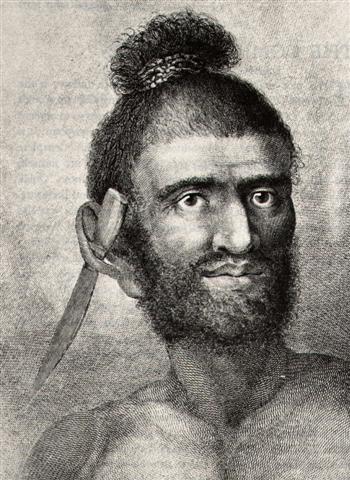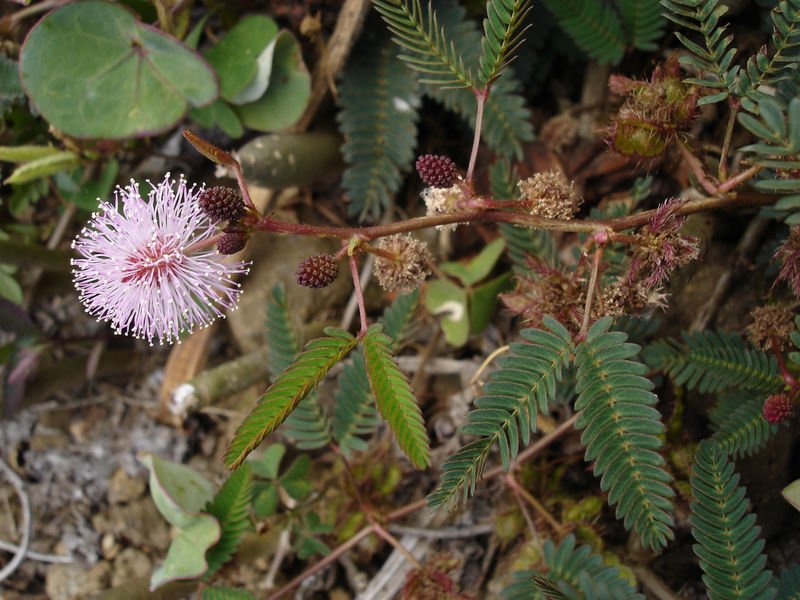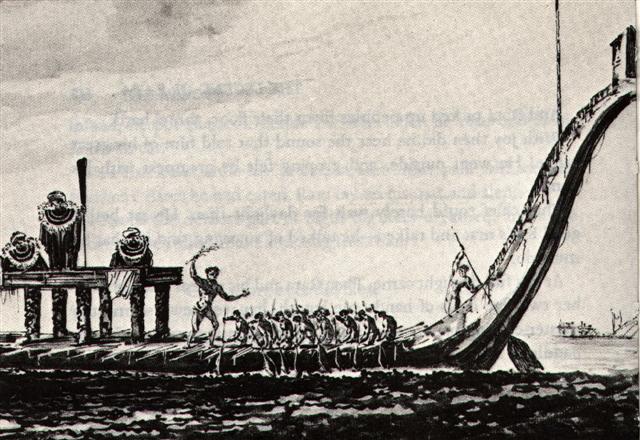42.
At the time of Gregory XIII his calendar would have had
the corresponding date (ºSeptember 15) not at Denebola
and Alaraph but at ο
Virginis:
 |
 |
 |
 |
 |
 |
 |
|
Cb7-7 |
Cb7-8
(4 * 136) |
Cb7-9 |
Cb7-10 |
Cb7-11 |
Cb7-12
(4 * 39) |
Cb7-13 (157) |
|
rere te manu |
te hoko huki |
te moko |
te hokohuki |
te maitaki |
te hau tea |
te rau hei |
|
CLOSE TO THE SUN: |
|
*361
March 16 (75) |
*362
17 |
*363
18 |
*364
19 |
*365
20 |
SIRRAH
0h |
ALGENIB PEGASI
22 |
|
"February 3 |
4 |
5 |
6 |
7
(*324) |
8 |
9
(40) |
|
JANUARY 11 |
12 |
13 |
14
(*300) |
15 |
16 |
17 |
|
CLOSE TO THE FULL MOON: |
|
DENEBOLA, ALARAPH (Unarmed)
September 15
|
*179
16 |
*180
17
(260) |
*181
18 |
ο
Virginis
19 |
ALCHITA
20 |
*184
21 |
|
ºSeptember 11 |
12 |
13 |
14
(*177) |
15 |
16 |
17
(260) |
|
"August 5 |
6
(218) |
7 |
8
(*140) |
9 |
10 |
11 |
|
JULY
13 |
14 |
15 |
16 |
17
(*118) |
18 |
19
(200) |
His calendar was 'crooked' - out of tune
with the ruling stars. There should be 5 days from the
conjunction between Leo and Virgo before reaching
Alchita.
... Day 80
in the Gregorian calendar was March 21 and right
ascension 0h was there because the Pope had decided this
should be the day of spring equinox.
...
Ecclesiastically, the equinox is reckoned to be on 21
March (even though the equinox occurs, astronomically
speaking, on 20 March in most years)
...
... When
the Pope rearranged the day for spring equinox from
number 84 ('March 25) to number 80 (ºMarch 21) the
earlier Julian structure was buried, was covered up (puo).
At the same time the Pope deliberately avoided to
correct the flow of Julian calendar days for what he may
have regarded as 4 unneccesary leap days prior to the
Council of Nicaea. Thus his balance sheet for days was
in order. The day numbers counted from the equinox were
increased with 4 and this was equal to allowing the 4
'unneccessary' leap days to remain in place. But he had
moved spring equinox to a position which was 4 days too
early compared to the ancient model
...
These '4
unneccessary leap days' (prior to the Council of Nicaea)
were equal in number to the precessional distance in
time between the Pope and the time of rongorongo. The
Gregorian calendar could therefore be easily understood
by the Easter Islanders. The Pope had created a 'crooked
calendar' but since his time the precession had fixed it
...

The topknot of Andromeda (Sirrah) was a ball of black hair from which
Maui emerged, like a chicken from his egg shell
confinement.

Andromeda was his mother, Taranga.
And at the other side of the year was the other wife of
the Sun, viz. Virgo.
... 'From
the time I was in your womb,' Maui went on, 'I
have known the names of these children of yours.
Listen,' he said as he pointed to his brothers in turn.
'You are Maui mua, you are Maui roto, you
are Maui taha, and you are Maui pae. And
as for me, I am Maui potiki, Maui-the-last-born.
And here I am.' When he had finished, Taranga had
to wipe her eyes because there were tears in them, and
she said: 'You are indeed my lastborn son. You are the
child of my old age. When I had you, no one knew, and
what you have been saying is the truth. Well, as you
were formed out of my topknot you can be Maui
tikitiki a Taranga.' So that became his name,
meaning Maui-formed-in-the-topknot-of-Taranga.
And this is very strange, because women in those days
did not have topknots. The topknot was the most sacred
part of a person, and only men had them
...

From α
Andromedae (the birth place of Maui)
to the corresponding place in Virgo (ο
Virginis) there was half a year.
From the beginning of the text on side a
of the C tablet there were 549 (= 3 * 183) days to the
return of the Navel of the Horse (Sirrah):
|
no
glyph |
 |
 |
 |
 |
 |
 |
|
Ca1-1 |
Ca1-2 |
Ca1-3 |
Ca1-4 |
Ca1-5 |
Ca1-6 |
|
koia |
ki te hoea |
ki te henua |
te rima te hau tea |
haga i te mea ke |
ki te henua - tagata honui |
|
CLOSE TO THE SUN: |
|
ALCHITA
= α Corvi,
MINKAR (Beak)
= ε Corvi |
PÁLIDA (Pale)
= δ
Crucis |
GIENAH (Wing)
= γ
Corvi, ζ Crucis |
CHANG SHA (Long Sand-bank)
= ζ Corvi |
INTROMETIDA
= ε Crucis,
ACRUX
= α Crucis |
ALGORAB
= δ Corvi,
GACRUX
= γ Crucis |
AVIS
SATYRA
= η
Corvi,
KRAZ
= β Corvi |
|
September 20
'August 24 |
(264
= 237 + 27)
(237 = 242 -
5) |
EQUINOX
26 |
23
(266)
27 |
JULY 22 (π)
28
(240) |
25 (*5 + 183)
29 |
(59
+ 183 + 27)
30
(242 = 11 * 22) |
|
"August 10 |
11 |
12 |
13 |
14 |
15
(227) |
16 |
|
CLOSE TO THE FULL MOON: |
|
SIRRAH (Navel of the Horse) |
ALGENIB PEGASI |
|
|
|
ANKAA |
|
|
March 21 (0h)
'February 22 |
22
TERMINALIA |
23
24 |
24
(83)
25 |
JULIAN EQUINOX
26 |
26
27 |
27
28
(59) |
|
"February 8 |
9 |
10 |
11 |
12 |
13 |
14
(45) |
|
357 |
 |
 |
 |
 |
 |
174 |
|
*Ca14-1 |
*Ca14-2 |
*Ca14-3 (366) |
*Ca14-4 |
*Ca14-5 |
|
Kua tupu te ata i te henua |
|
CLOSE TO THE SUN: |
|
September 18 |
19 |
ALCHITA (263) |
21 |
EQUINOX |
|
'August 22 |
23 |
24 (236 = 263
- 27) |
25 |
26 |
|
"August 8 (8-8) |
9 |
10 (222 = 263
- 41) |
11 |
12 |
|
CLOSE TO THE FULL MOON: |
|
March 19 |
20 |
SIRRAH (80) |
22 |
23 |
|
'February 20 |
21 |
22
(53 = 80 - 27) |
TERMINALIA |
24 |
|
"February 6 |
7 |
8 (39 = 222 -
183) |
9
(2-9) |
10 |
 |
 |
 |
 |
 |
 |
 |
|
Cb7-7 |
Cb7-8
(4 * 136) |
Cb7-9 |
Cb7-10 |
Cb7-11 |
Cb7-12
(4 * 39) |
Cb7-13 (157) |
|
rere te manu |
te hoko huki |
te moko |
te hokohuki |
te maitaki |
te hau tea |
te rau hei |
|
CLOSE TO THE SUN: |
|
*361
March 16 (75) |
*362
17 |
*363
18 |
*364
19 |
*365
20 |
SIRRAH
0h |
ALGENIB PEGASI
22 |
|
'February 17 (48) |
18 |
19 |
20 |
21 |
22 |
TERMINALIA |
|
"February 3 |
4 |
5 |
6 |
7
(*324) |
8 |
9
(40) |
|
JANUARY 11 |
12 |
13 |
14
(*300) |
15 |
16 |
(366
+ 17 = 383) |
|
CLOSE TO THE FULL MOON: |
|
DENEBOLA, ALARAPH (Unarmed)
September 15
|
*179
16 |
*180
17 |
*181
18 |
ο Virginis
19 |
ALCHITA
20 |
*184
21
(264) |
|
ºSeptember 11 |
12 |
13 |
14
(*177) |
15 |
16 |
17
(260) |
|
'August 19 |
20 |
21 |
22 |
23 |
24
(8 * 29½) |
25 |
|
"August 5 |
6
(218) |
7 |
8 |
9 |
10 |
(*143 = 11 * 13) |
|
JULY
13 |
14 |
15 |
16 |
17
(*118) |
18 |
19
(200) |
Te rau hei (branch of mimosa)
means a 'hanging victim', a dead person who later will
return to life again (be recycled).
 |
 |
|
rau
hei |
Cb7-13 |
|
... The
Sensitive
plant
(Mimosa pudica L.) is a creeping
annual or perennial herb often grown for its
curiosity value: the compound leaves fold
inward and droop when touched, re-opening
within minutes.
Mimosa pudica
is native to Brazil, but is now a
pantropical weed. Other names given to this
curious plant are Humble plant, TickleMe
plant, Shame plant, Sleeping Grass, Prayer
plant, Touch-me-not, Makahiya
(Philippines, meaning 'shy'), Mori Vivi
(West Indies), mate-loi (false death)
(Tonga) ...
... In the evening the leaflets will fold
together and the whole leaf droops downward.
It then
re-opens at sunrise ... |

|
Rau
Rau
1. (Also: raupá) leaf of a plant, stem
and leaves. 2. Hundred: e tahi te rau, e rua
te rau, etc., 100, 200... Also seems to have
been used in the meaning of 'many'. Tu'u
henua rau, someone who has travelled to many
countries (such were called in the 19th century
natives who had travelled abroad, employed as
sailors). Compare with: tai raurau-á riki.
Vanaga.
Rau
hei. 1. Branch of mimosa. 2. Killed
enemy. 3. Hanged 'fish'. 'Branche
du mimosa (signe de mort), ennemie túe (poisson
suspendu)' according to Jaussen.
Barthel.
Ra'u
1. To take something without the owner's
permission; to seize something forcibly. 2.
Ra'u maahu, ancient expression, literally:
to appropriate the steam (maahu) of the
food just taken out of an earth oven. It refers
to intruders coming to help themselves
uninvited. Warriors off to a battle used to be
told: E ra'u maahu no koe, o pagaha'a!
meaning: 'Eat little, lest you be heavy (and
lose your agility).' Vanaga.
1. Sa.: la'u, to clear
off, to carry away; la'u mai, to
bring. Uvea: laku, to send, to throw
into. Ha.: laulau, a bundle, a bag; a
wrapper of a bundle, the netting in which food
is carried; lalau, to seize, to catch
hold of. 2. To.: lau, lalau,
lauji, to pinch with the fingers, to nip.
Ha.: lau, to feel after a thing; lalau,
to extend (as the hand), to seize, to catch hold
of. 3. Sa.: lau, a leaf; lalau, to
be in leaf; laulau, a food tray plaited
from a coconut leaf, to set out food on such a
tray or on a table. To.: lau, lou,
a leaf; laulau, a tray. Fu., Uvea,
Nuguria: lau, a leaf. Niuē:
lau,
a leaf; laulau,
a table. Ha.: lau,
a leaf; laulau,
the netting in which food is carried. Ma., Ta.,
Rarotonga, Rapanui, Paumotu, Nukuoro, Fotuna:
rau,
a leaf. Mgv.: rau,
rou,
id. Mq.: au,
ou,
id. Churchill 2.
Ta.:
rauhuru,
dry banana leaf. Mq.:
auhuu,
id. (To.: hulu,
leaves dry and dead.) Ha.:
lauhulu,
banana leaf. Churchill. |
|
Lau, s.
Haw., to feel for, spread out, expand, be broad,
numerous; s. leaf of a tree or plant,
expanse, place where people dwell, the end,
point; sc. extension of a thing; the number four
hundred; lau-kua, to scrape together, to
gather up from here and there confusedly;
lau-la, broad, wide, extension, width; lau-na,
so associate with, be friendly; lau-oho
(lit. 'leaves of the head'), the hair. Tong.,
lau, low, spread out, be broad,
exfoliate; s. surface area; lau-mata,
eyelash; lo, a leaf; lo-gnutu, the
lips (lit. 'leaves of the mouth'). N. Zeal. and
Mang., rau, spread, expand; raku-raku,
to scratch, scrape.
Sam., lau,
leaf, thatch, lip, brim of a cup, breadth,
numeral hundred after the first hundred;
lau-a, to be in leaf, full-leafed;
laua-ai, a town, in opposition to the bush;
lau-ulu, the hair of the head;
launga-tasi, even, level; lau-lau, to
lay out, spread out food on a table; lau-tata,
a level place on a mountain or at its foot;
lau-le-anga, uneven; lau-talinga, the
lobe of the ear, a fungus; lau-tele,
large, wide, common, of people. Tah., rau,
a leaf, a hundred; when counting by couples, two
hundred; many indefinitely; rau-rau, to
scratch. Fiji., lou, leaves for covering
an oven; longa, a mat, a bed for
planting; drau, a leaf; drau-drau,
leaves on which food is served up, also a
hundred.
Saparua., laun,
leaf. Mal., daun, id.; luwas,
broad, extended. Sunda., Rubak., id., Amboyna,
ai-low, id. Malg., rav, ravin,
leaf; ravin-tadign, lobe of the ear;
lava, long, high, indefinite expression of
extension; lava-lava, eternal;
lava-tangh, a spider. The word lau,
in the sense of expanse, and hence 'the sea,
ocean', is not now used in the Polynesian
dialects. There remain, however, two compound
forms to indicate its former use in that sense:
lau-make, Haw., lit. the abating or
subsiding of water, i.e., drought; rau-mate,
Tah., to cease from rain, be fair weather;
rau-mate, N. Zeal., id., hence summer.
The other word is
koo-lau, Haw., kona-rau, N. Zeal.,
toe-rau, Tah., on the side of the great
ocean, the weather side of an island or group;
toa-lau, Sam., the north-east trade wind.
In Fiji, lau is the name of the windward
islands generally. In the Malay and pre-Malay
dialects that word in that sense still remains
under various forms: laut, lauti,
lautan, lauhaha, olat,
wolat, medi-laut, all signifying the
sea, on the same principle of derivation as the
Latin æquor,
flat, level, expanse, the sea.
Welsh, llav,
to expand; lled, breadth. Armor., blad,
flat, broad. Lat., latus, broad, wide,
spacious. Greek, πλατυς, wide, broad,
flat; πλατη, broad surface, blade of an
oar; πλακοσ, broad, flat. Pers., lâtû,
blade of an oar, oar. Lith., platus,
flat. Sanskr., prath, be extended, to
spread. Goth., laufs or laubs, a
leaf. Icel., laug, bath; lauga, to
bathe, lögr, the sea, water, moisture.
Bearing in mind
l and n are convertible in the
West Aryan as in the Polynesian dialects, we
might refer to the following as original
relatives of the Polynesian lau: Sanskr.,
nau, boat, ship; snâ, and its
connections, 'to bathe'. Greek, ναω, to
flow, float; ναω, νεω, to swim, to
spin; νευσις, s. swimming; ναυς,
ship, &c. Lat., no-are, to swim, float.
A.-Sax., naca, id. O. Norse, snäcka,
a shell, sobriquet of boats and vessels. Perhaps
the Gothic snaga, a garment.
Liddell and Scott
and also Benfey refer the Greek νεω and
Latin neo, 'to spin', to the Sanskrit
nah, 'to bind, tie'. With due deference, I
would suggest that the underlying sense of 'to
bind' and 'tie' is 'to shorten, contract, to
knit' - necto, nodus - and that
the original conception of 'to spin' was one of
extension, lengthening, as represented in the
Polynesian lau. (Fornander) |
...
Across the
bows connecting each double canoe was a floor, covering
the chambers containing idols, drums, trumpet shells,
and other treasures for the gods and people of
Ra'itea; and upon the floor were placed in a row
sacrifices from abroad, which consisted of human victims
brought for that purpose and just slain, and great
fishes newly caught from fishing grounds of the
neighboring islands. They were placed upon the floor,
parallel with the canoe, alternatively a man and a
cavalli fish, a man and a shark, a man and a turtle, and
finally a man closed in the line.
Behind this
grim spectacle stood two or three priests in sacerdotal
attire, which consisted of a plain loin girdle, a
shoulder cape reaching down to the waist and tipped with
fringe, wide or narrow according to their grades, and a
circular cap fitting closely to the head - all made of
finely braided purau bark bleached white. Seated
at the paddles were the navigators and warrior chiefs in
gay girdles and capes of tapa and helmets of
various shapes, and wise men in plain girdles, capes,
and turbans of brown or white tapa.
As this
terribly earnest procession arrived, the canoes were
quietly drawn up along the shore, and the guests were
met at the receiving marae by an imposing
procession of the dignitaries and warriors of the land
grandly attired, and also unarmed, headed by the king,
the two primates, Paoa-uri
and Paoa-tea, and the priests of the realm, who
greeted them in low, solemn tones.
Then
everybody alike set to work silently disposing of the
sacrifices just arrived, combined with others of the
same mixed kind prepared by the inhabitants of the
land. They strung them through the heads with sennit,
and act called tu'i-aha, and then suspended them
upon the boughs of the trees of the seaside and inwards,
the fish diversifying the ghastly spectacle of the human
bodies, a decoration called ra'a nu'u a 'Oro-mata-'oa
(sacredness of the host of Warrior-of-long-face)
...

|











